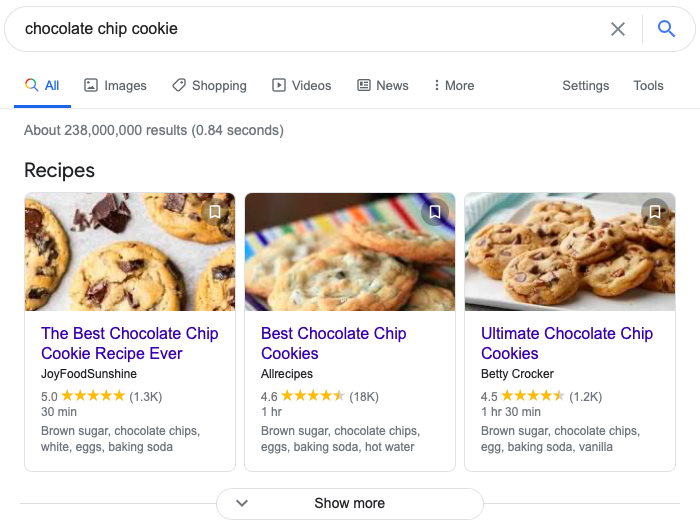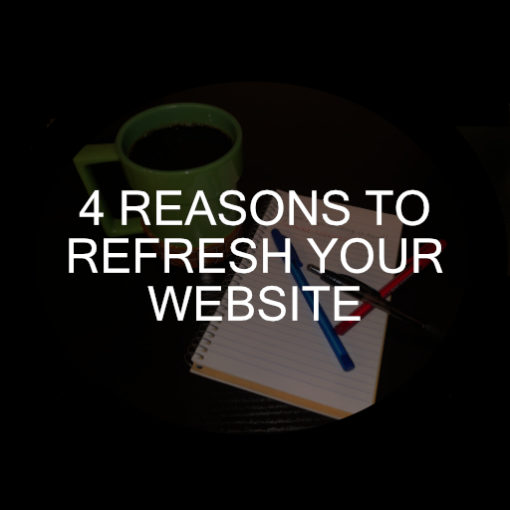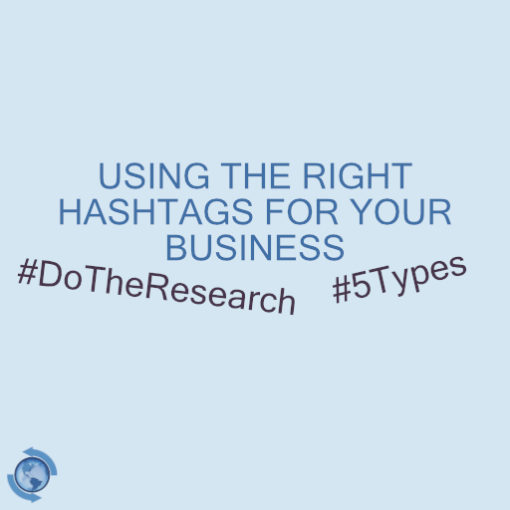Search Intent – What is it?
What, exactly, is search intent?
It’s the why.
Search intent is simply the reason for the search. The why of it. Why did this person search for these words – what was the user actually looking for?
A website’s job is to be the best answers for the user’s intended questions.
The 4 Types of Search Intent
Informational Intent
The user is looking for information. The information could be simple:
- “the symbol for pi”
- “where is Palm Beach”
- “chocolate chip cookies”
The information being seemed could also be something more complicated:
- “how does string theory work?”
- “how to rebuild carburetor”

Note that for some of these, Google has a good idea of what types of results to return. For example, the user searching for “chocolate chip cookies” is probably looking for a recipe. A recipe card with a picture would be even better than just the recipe.
Google will also include videos in search results when it makes sense. “How to rebuild carburetor” will most likely return some video results along with text. The user may be looking for step-by-step instructions on the build, and a video walkthrough goes great with that.
Navigational Intent
When people are using a search engine to find a particular page, it’s called navigational intent. A great example of this is when someone types “amazon” into a search engine. That user is most likely looking for Amazon.com, not information about the Amazon River. Other examples:
- “twitter”
- “facebook”
- “VA governor’s office”
This type of search intent is great for already established traffic to your site. People are looking for your site and they found it quickly without having to remember the actual URL. Ranking high in this type of search is not necessarily beneficial if your site is coming up first when the results people are looking for isn’t really you. If you come up first for “amazon” when people really want Amazon.com, your site will be skipped over for the result the users actually wanted, and you won’t get much useful traffic from it (if any).
Transactional Intent
This one is very straightforward. People have transactional intent when their purpose for searching the web is to buy something. These folks are shopping, and the results that search engines display first will of course be shops offering the products the users are searching for.
Some examples of transactional intent search phrases:
- “cheap iPhone 11”
- “buy Nintendo switch light”
- “kindle fire price”
Commercial Investigation
Those with commercial investigation intent are also looking to buy… maybe. And definitely not today. They’re looking for information on items, such as reviews, comparisons, and specifications.
Examples of commercial investigation intent:
- “new iPhone vs new Galaxy”
- “best air purifier for allergies”
Match Your Keywords to Intent
The keywords and phrases you choose for SEO on your site can absolutely be used to match search intent.
For example, if people are looking to buy something you sell, show them the products. Use the appropriate keywords/phrases on a products page selling those items. People looking to shop don’t want to read articles. This is true the other way around as well.
People looking for information (how-to guides, definitions, etc.) do not want to shop. While there’s a chance they could be interested in your products or services down the road, their search terms today say they just want information. In this case, you don’t want to show them a bunch of products, you want to give them the article with information.
Finally…
There is a lot more in-depth information on search intent out there. This was just a quick introduction. Keep in mind when writing content or setting up a shop to not only use keywords/phrases that match your content or store, but also ones that match what people are actually searching for.
Happy SEOing!




